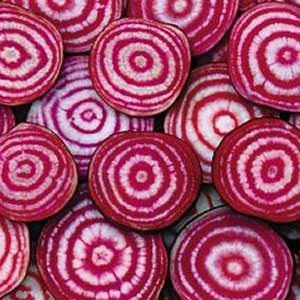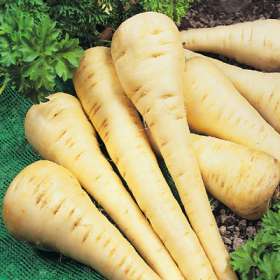Grow a Root - It's a Hoot
Vincent Lazaneo
 The edible part of some vegetables is their large root. During our cool season, it is easier to grow popular root crops like beets, carrots, radishes and turnips. We can also grow other, less common ones, such as celeriac, parsnips and rutabagas. (White potatoes which grow underground and look like roots are actually modified stems called tubers.)
The edible part of some vegetables is their large root. During our cool season, it is easier to grow popular root crops like beets, carrots, radishes and turnips. We can also grow other, less common ones, such as celeriac, parsnips and rutabagas. (White potatoes which grow underground and look like roots are actually modified stems called tubers.)
Root crops are usually grown from fall to spring in coastal areas of San Diego County. In colder inland areas the best time to plant seed is from August to October or February to March. Seeds should be sown where plants will receive sun all day (at least 6 hours). Root crops prefer sandy soils, but they can be grown in any well-drained soil. They can also be grown in a raised bed or a large container.
Prepare the planting area by loosening the soil with a shovel to a depth of 6 to12 inches. Next, apply compost and a little pre-plant fertilizer, and then thoroughly mix them into the soil. Level the surface with a rake, and then irrigate to wet the soil at least a foot deep. When the surface begins to dry, mark rows 12 - 15 inches apart.
 Plant seeds at the correct depth which is shown on the seed packet. Be careful not to plant seeds too close together. Cover them with fine soil or sand if soil crusting is a problem and gently firm it down. Thoroughly wet the soil to a depth of 6 inches. Use a fine spray of water so the seeds will not be washed out. Water lightly once or twice a day until the seeds sprout, then water less often.
Plant seeds at the correct depth which is shown on the seed packet. Be careful not to plant seeds too close together. Cover them with fine soil or sand if soil crusting is a problem and gently firm it down. Thoroughly wet the soil to a depth of 6 inches. Use a fine spray of water so the seeds will not be washed out. Water lightly once or twice a day until the seeds sprout, then water less often.
Thin seedlings when they are small to prevent overcrowding. This will allow the remaining plants to grow rapidly and not be stunted. You will find the proper spacing on the seed packet. Except for radishes which mature quickly, feed root crops again when they are 2 to 3 inches tall. Scatter fertilizer lightly along the row, then water well.
Harvest root crops when they are large enough to eat. Mature roots can be left in the ground until needed, but they should be used before they get old and tough. The young leaves of beets and turnips are also edible.
Vincent Lazaneo Urban Horticulture Advisor Emeritus for UC Cooperative Extension. He helped found the San Diego County Master Gardener Association more than two decades ago and served as its advisor. He is the author of numerous articles on plants and pests that appeared in the San Diego Union-Tribune, California Garden and other publications.

